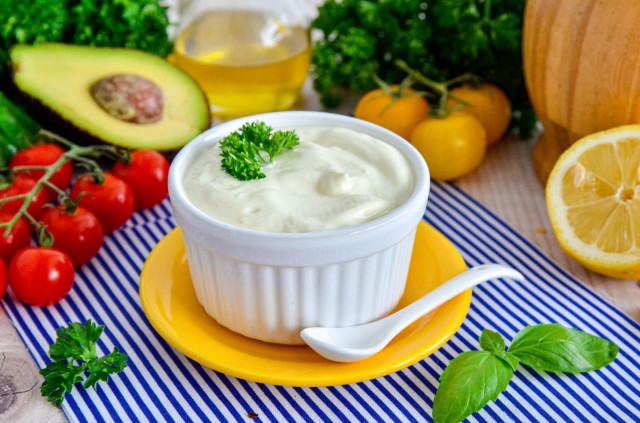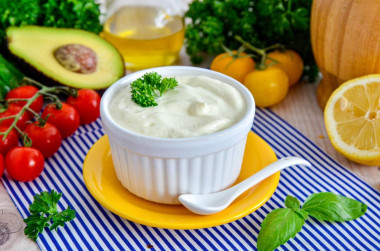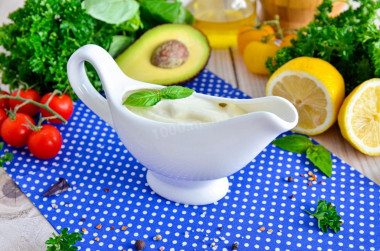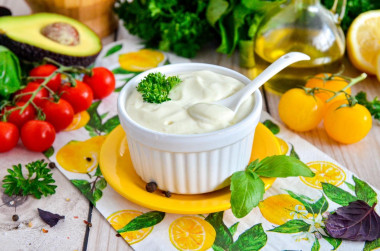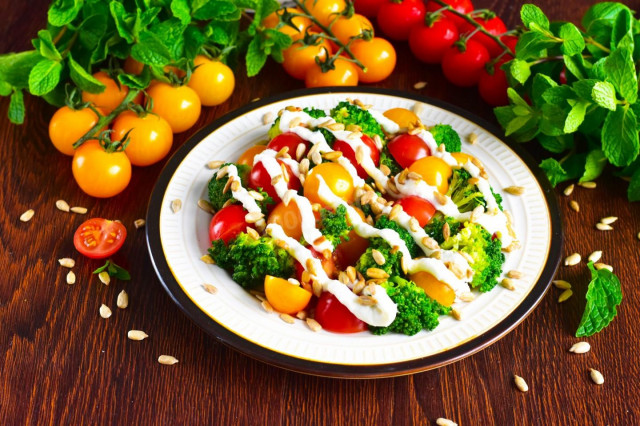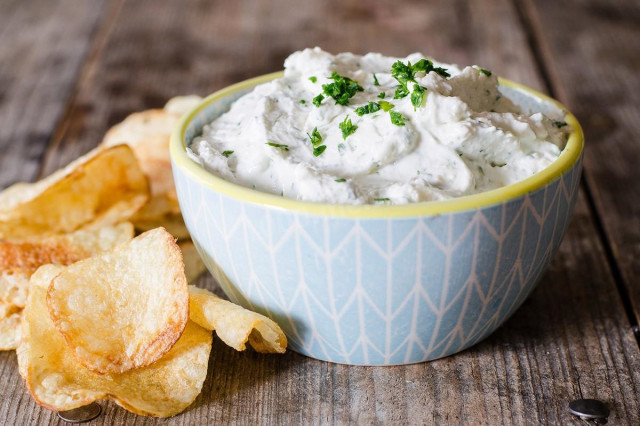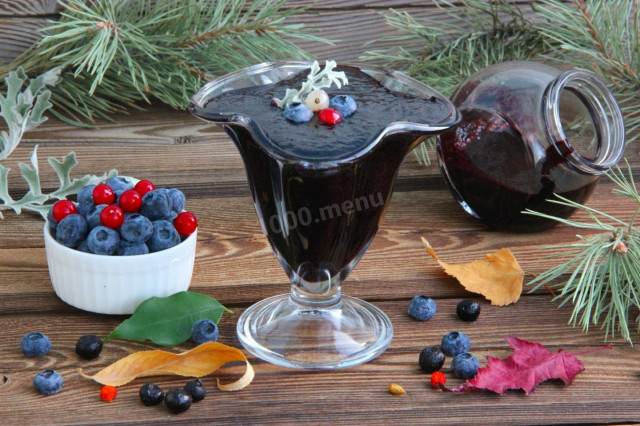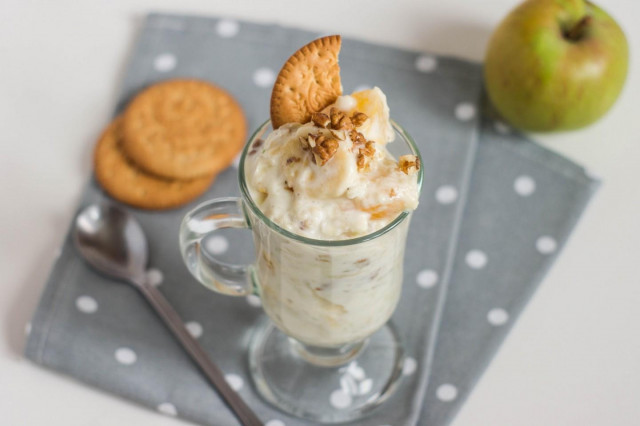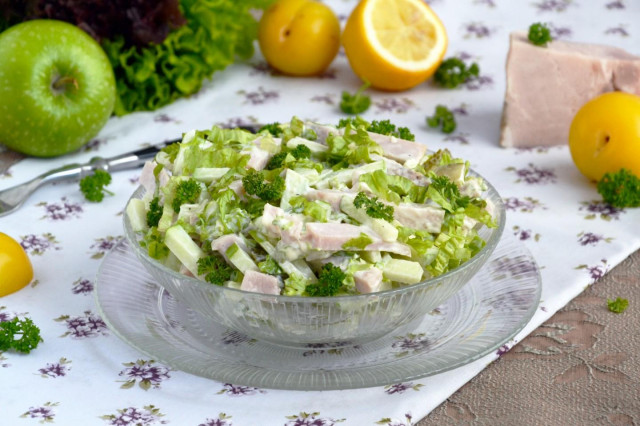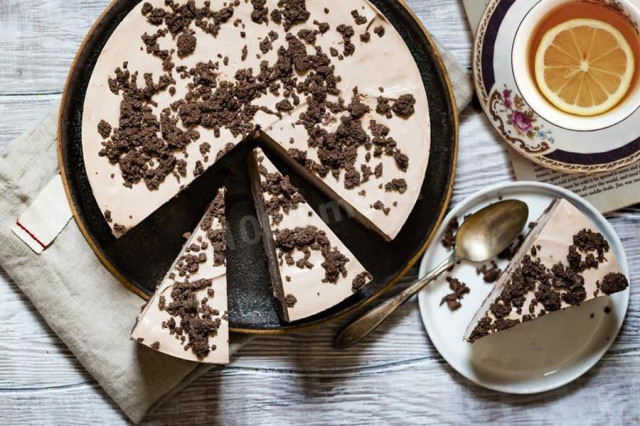Composition / ingredients
Step-by-step cooking
Step 1:
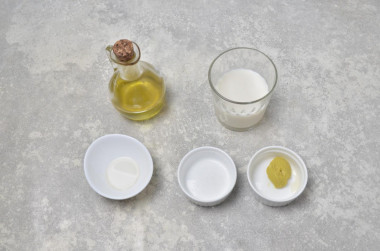
How to make mayonnaise without eggs in a blender? Prepare the products. I strongly advise you to take odorless, refined oil for making mayonnaise. First-pressed oils usually have a characteristic bitterness, it is good in salads, but you may not like it in the sauce. The oil itself can be sunflower, olive, whatever is at hand. The fat content of milk can also be any. To make mayonnaise, you will need an immersion blender.
Step 2:
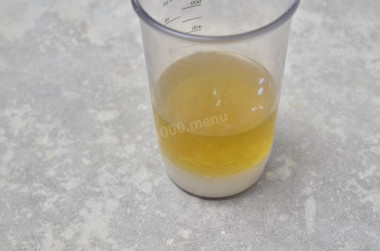
Pour oil into a tall glass, which usually comes with an immersion blender. Pour in the milk next. Since liquids have different densities, they will be stratified.
Step 3:
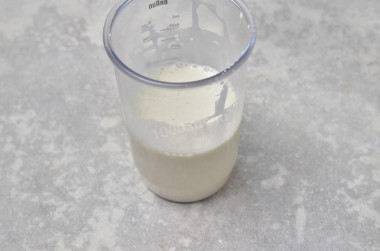
Lower the immersion blender into the glass and start whipping. Milk and butter will immediately combine, the mass will turn white. As it is whipped, it will begin to thicken. How much the sauce will thicken immediately depends on the type of butter you use and the fat content of the milk. My mayonnaise didn't thicken right away, it's not scary, we'll fix it later. Beat it for a couple of minutes, no more.
Step 4:
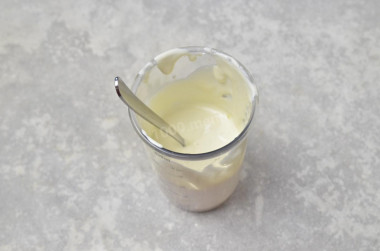
Add mustard. Choose it to taste, if it is spicy, then put a little, sweet — more. Add salt, pour in vinegar. Instead of apple juice, white wine or lemon juice is also suitable. Punch the mayonnaise again with a blender. If it is liquid, then pour in a thin trickle of a little more vegetable oil to the desired density. Taste the mayonnaise. Add those ingredients that are missing. Stir again.
Step 5:
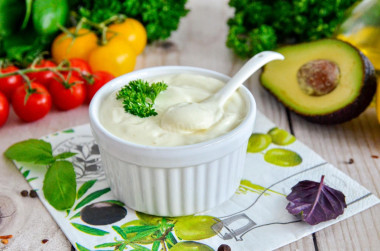
Put the finished sauce in a glass jar and put it in the refrigerator. It can be stored longer than usual, since there are no raw eggs in the composition. But it's still better to cook in small portions — fresh mayonnaise tastes better. Season salads with it or serve it with other dishes as a sauce. Enjoy your meal!
Since the degree of salinity, sweetness, bitterness, sharpness, acid, burning is individual for everyone, always add spices, spices and seasonings, focusing on your taste! If you put some of the seasonings for the first time, then keep in mind that there are spices that it is especially important not to shift (for example, chili pepper).
Caloric content of the products possible in the composition of the dish
- Whole cow's milk - 68 kcal/100g
- Milk 3.5% fat content - 64 kcal/100g
- Milk 3.2% fat content - 60 kcal/100g
- Milk 1.5% fat content - 47 kcal/100g
- Concentrated milk 7.5% fat content - 140 kcal/100g
- Milk 2.5% fat content - 54 kcal/100g
- Mustard canteen - 417 kcal/100g
- Mustard - 417 kcal/100g
- Vegetable oil - 873 kcal/100g
- Salt - 0 kcal/100g
- Apple cider vinegar - 14 kcal/100g

